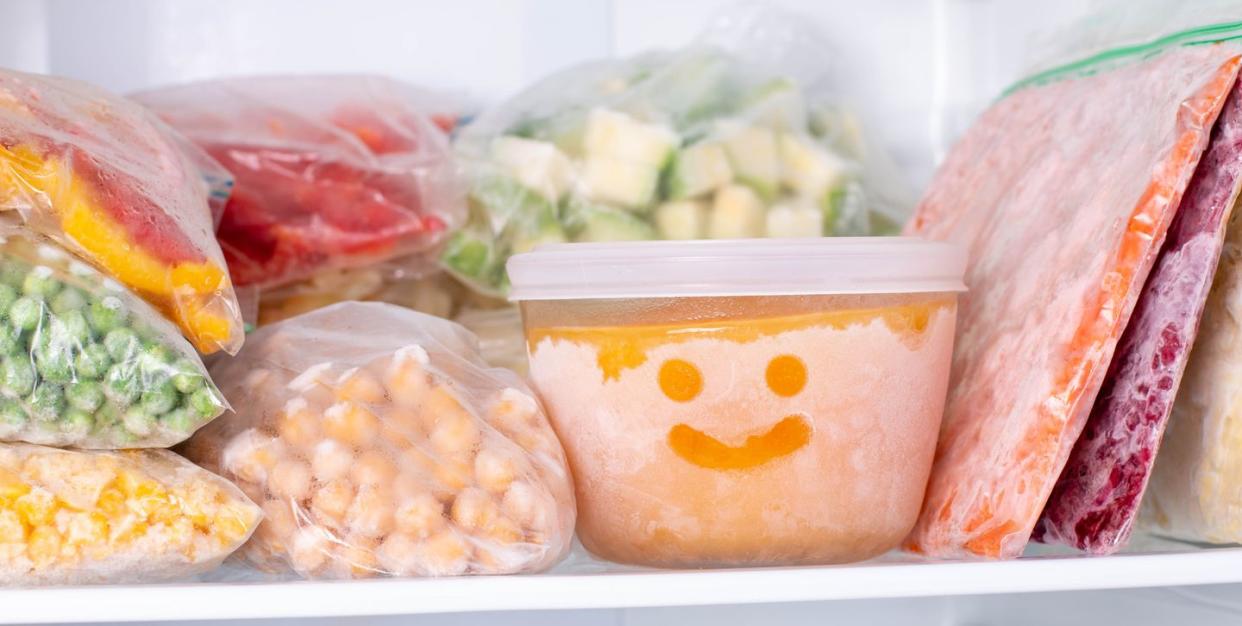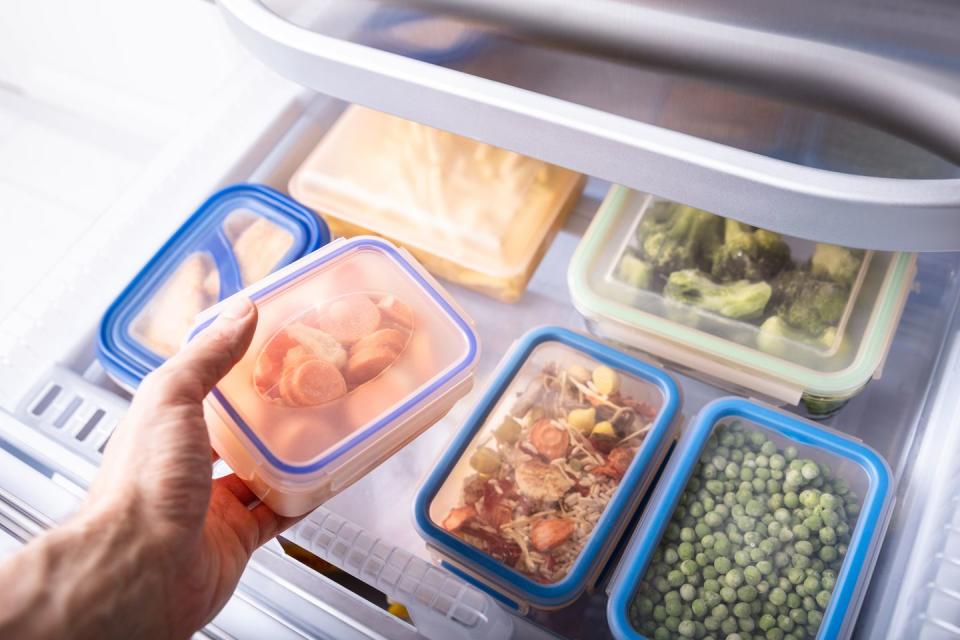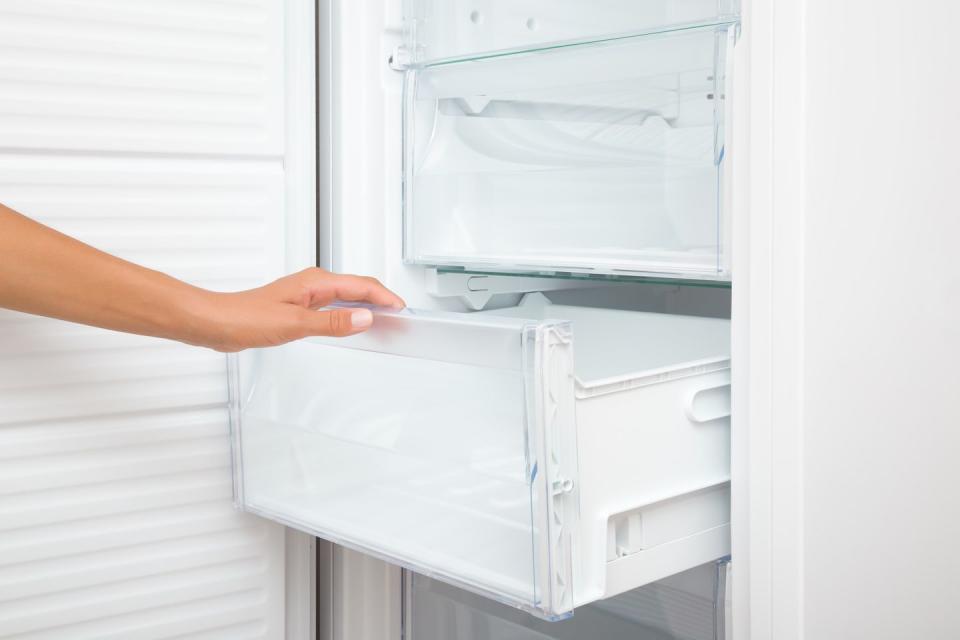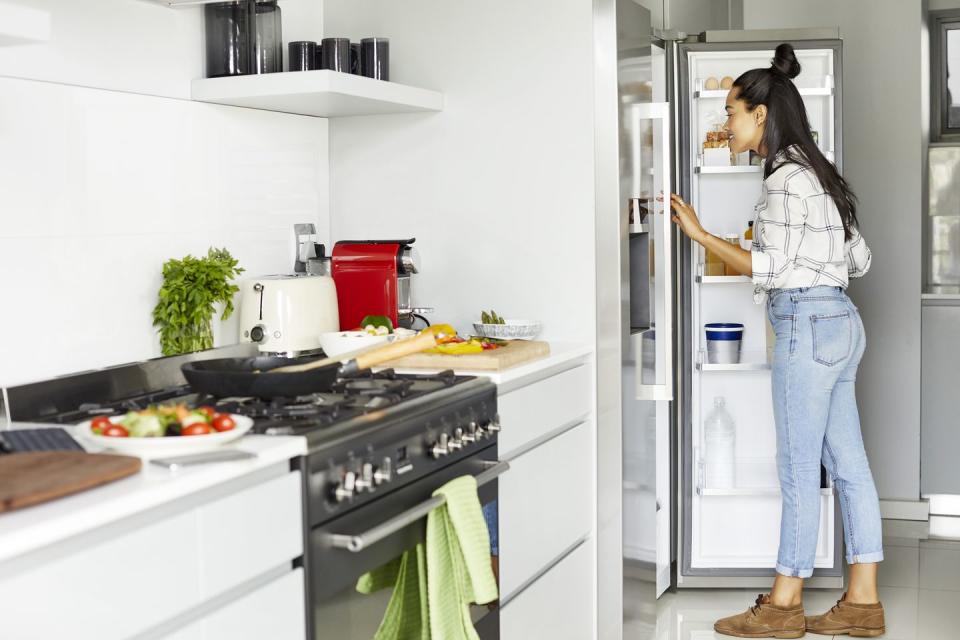6 mistakes you're making with your freezer

Love Good Housekeeping and want more of our Triple-Tested recipes, home tips, fashion inspiration, essential consumer advice and so much more delivered to your inbox? Sign up to our FREE weekly newsletters, sit back and enjoy!
The poor old freezer gets little attention compared to the other appliances, like the washing machine or dishwasher. But when you think how lost we'd be without it, it definitely deserves TLC and to be used properly.
Most of us will be guilty of mistreating the freezer in one way or another, which can waste energy, impact the quality of what we freeze, and even deter its lifespan. Want to know if you’re treating your freezer as well as you should? Here’s 6 bad habits you need to break now, and what you should do instead.
1. Forgetting about what’s in there
The first and likely most common habit, is forgetting what you’ve got stored in the freezer. This is not surprising considering most of us hate to waste food and use the freezer to store leftovers.
The trouble is, if you don’t make plans to eat what you store, it can end up ignored and buried amongst the other freshly frozen goods. While a full freezer is technically more efficient than an empty one (more on this later!), you don’t want wasted space in the freezer which could be put to better use or risk food deteriorating before you use it.
The answer to this is taking the time to organise what you have stored in the freezer. This takes a bit of effort, but it’s worth it – think of it as decluttering your freezer! Start by counting how many drawers you have and deciding how you want it to be laid out once you’re finished. A drawer dedicated to meat, one for veg and another for desserts might be useful. A space for frozen lunches for work might be handy too.

Make sure everything is labelled with what it is (particularly if it’s something you’ve cooked from scratch) and the date frozen, so you know how long it’s been there. Any UFOs (unidentifiable frozen objects!), or those showing signs of freezer burn, can be removed. Here’s how long you should keep food in your freezer for guidance. Keep a cool bag on standby to store any excess items while you organise. When you add new items, put these towards the back to create a rotation system. Make a list of what you’ve got to keep track of it at the same time too. This can help with meal planning.
2. Failing to defrost it
While some freezers feature Frost-Free technology, which prevents ice from forming within, others still require defrosting. This is such a disruptive and awkward chore, that it’s one many of us will put off. But it can’t be ignored forever. Fail to defrost your freezer and eventually the excess ice will prevent you from accessing the drawers, effectively freezing them into position. I’m ashamed to say I’ve even snapped the front of one of the drawers clean away in an attempt to force it out! Excess ice will also increase the running costs for your freezer, so it’s something to avoid.
The sooner you defrost your freezer, the easier it will be, so make sure you defrost it once the ice reaches more than 3cm thick on the walls or roof. This involves switching off and unplugging the appliance, then taking everything out, moving items into a cooler bag or your neighbour’s freezer for the time being (this is a good time to organise everything).
Following this, place towels under and around the freezer and leave the door open for the ice to melt. You can sit a bowl of hot water on a tea towel within to speed up the process, replacing it when it cools. Do not use anything sharp to manually chip away at the ice; you could damage the freezer. Replace trays once clear of ice and only add the food once it's back to temperature.

3. Not filling it to capacity
If your freezer is only half-full, you’ll be using more energy to maintain it. That’s because, while full, the freezer can better retain the lower temperature within. The items themselves actually keep temperatures down and mean the freezer doesn’t require as much energy to recover whenever you open and close the door. By filling the space, there’s also less room for warm air to enter.
However, don’t go overboard and overfill your freezer; the air needs to be able to circulate to keep the temperature consistent. If you need to fill some freezer space, you could always use freezer blocks, or fill freezable containers with water.
4. Freezing the wrong foods
Not everything is suitable for freezing. In fact, there’s some items could cause damage if you attempt to freeze them. For instance, fizzy drinks in glass or cans can expand and explode, while yogurt and cream can change in consistency and even separate. Some fresh fruit can become overly soggy when thawed due to the initial high-water content. Always check items are suitable for freezing and decant them to a smaller container if there’s excess packaging.
Always check what you’re using to store items is sufficient. It should be airtight and sealed to prevent freezer burn, and ideally reusable, such as Lakeland’s Soup & Sauce Press Seal Freezer Bags. Freezer burn happens when the air comes into contact with the food.

5. Leaving the door open
Do not open the freezer door unnecessarily, or leave it open for a prolonged time while you browse or add food. The longer you leave it open, the more energy will be required to restore it back to the right temperature. Many freezers are equipped with open-door alarms to prevent this. One way to limit the time you open the door for is to keep a list on the door of the contents, so you don’t need to spend time browsing.
If you want to check the effectiveness of the seal, close a piece of paper in the door of the freezer. If it slips out easily when you pull it, the seal needs cleaning or replacing.
6. Not using the right settings
Most freezers have settings and a thermostat. They have to, considering how varied the ambient temperature of the room can be. First of all, your freezer should be set to -18 degrees according to the Food Standards Agency. Check your manual to find the recommended setting and use a physical thermometer to confirm the temperature is suitable. Depending on the environment, how full the freezer is, and how often it is used, you may need to adjust the setting lower or higher.
Don’t forget to make use of the Fast Freeze setting if you have one. This is ideal for when you need to freeze a large amount of fresh food in one batch. Always check the manual for guidance, as you may need to activate it for a time prior to storing the items.
You Might Also Like


